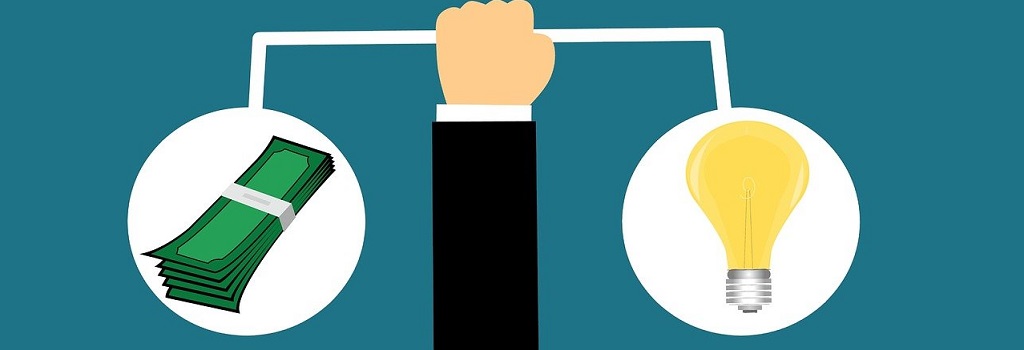
Simple steps to build Brand Equity into your 2024 B2B Marketing campaign
January 2024 and Corporate Marketing Departments are getting braced for new sales targets, new markets, new products, and new hot topics in the media. Content gets planned and scheduled, research gets allocated, ideas, creatives are all taken from the corporate arsenal of products and services, ‘campaigns’ are produced to support sales of the organization’s product and services. But in balancing the complex messages of product superiority, one essential ingredient often goes neglected. The need to build the organization’s Brand Equity.
…and it feels so good!
It’s easy to see what Brand Equity means in the consumer world. From the pizza we eat, to the car we drive, there is always a reason we buy. In B2C, brand equity is associated with a feeling – you feel cool drinking coke, powerful driving a Merc, in the zone in an e-car – have you noticed how all the electric cars advertise with way out mood music creating a feeling of entitlement and above the masses? Try selling a $1m dollar software solution based on that!
What exactly is Brand Equity in B2B?
Like B2C purchasing decisions, there is definitely a ‘feeling’ element to B2B sales. It’s called trust – entrusting your business and your career into a safe pair of hands – nobody gets fired for buying IBM remember.
Brand Equity is the essential element of trust that a customer, or buying executives in that company, have in your organization to reliably deliver your products and services to solve their problems without risk. The clue is in the name, ‘equity’. It means intrinsic value – and in this case it isn’t value stored in the bank, or in your corporate headquarters – it’s value entirely found in the minds of your prospective customers and existing clients.
And it’s the Corporate Marketing Department’s job to put it there.
In the world of B2B, Brand Equity is complex concept
Some PR Pros talk about their brand as if their logo (bring on the rebrand team) and website (we need a refresh) bring with it Brand Equity. They fuss about C-level images – Ties are out? Ties are in? T-shirts and jackets out or in? One thing we do know from the reincarnation and dare I say it, rebrand of OpenAI’s Sam Altman, is that shorts are short-lived and definitely out (sorry to our own PR man in shorts Sam)!
They’re all part of the delivery of your Brand Equity, but not it. No-one spends $1m on a new system or solution because of your logo, your website, or whether your SEO has a tie or a T-shirt. It’s all about understanding the value that you can bring to the customer, and the customer’s own journey through the decision-making process.
How do we build Band Equity into our campaigns?
As with friendships, trust is built on familiarity, consistency, and empathy. It’s important to build campaigns that actively target each of your main audience groups with consistent messages tailored for their own concerns. This means building themes into your campaigns and where possible, these should be supported by ongoing patterns of information. For example, IBA will often support the appointment of a new CEO with the announcement of their plans for growth or change. We will then plan to follow this with a cascading pattern of releases announcing initiatives, further appointments, and contracts to imply the company’s success under the new regime.
Patterns and consistency build understanding and with understanding comes trust – it’s all about the signals you send.
- Build The campaign matrix: Thought leadership to build trust and profile subject matter experts (SMEs) to show strength in depth, news releases selling the corporative narrative, comments to show agility in message delivery – and all to get your Brand Equity message pitched and placed in trusted media to get that important third-party endorsement.
- Review your lead gen: This is the big job. Check out your sales leads that convert and those that don’t Brainstorm with your sales team – they know why they’re losing bids. Know the level and job titles of the execs you’re selling to and add the rule of three – purchasers, ratifiers, and influencers in the decision. Audit their pain points, their issues. This is key to help you target your messages and your media placements.
- Owned versus earned: Yes, put content on your website. But your sales process starts without familiarity if the first time a prospect reads about you is on your own website. Earned media placements equipped with the right SEO and backlinks opens up your message to thousands of prospects that cold calling will never get to.
- Third party endorsement and message pull through: Go for multiple placements – the same message from more than one source is more readily believed. Trust builds for each message.Enquiries for big ticket items regularly arrive further down the line – we had one case when the meeting request came direct to the author’s LinkedIn.
- Influencer Marketing: Your best brand advocates are your customers. Everyone knows you can get an analyst on side if you pay them enough, but the holy grail are customers as brand advocates. One or two will do. We’ve done campaigns just using one! One key Brand Advocate is worth 50 Awards and 15 Analysts.
You’re starting to build trust in your brand so now head for the sales funnel and focus on Account-Based Marketing and Bid Support Projects to spike the competition!
Meet the new kid on the block – Attention Marketing
All the while you are amplifying your message on social. Keep an open mind on new developments like WorkTok. There’s talk now about Attention Marketing moving into the B2B space. If you can get a customer as a brand advocate on video for 15 seconds, you can probably put in for a pay rise 😊
Judith Ingleton-Beer is CEO at IBA International.

Leave a comment